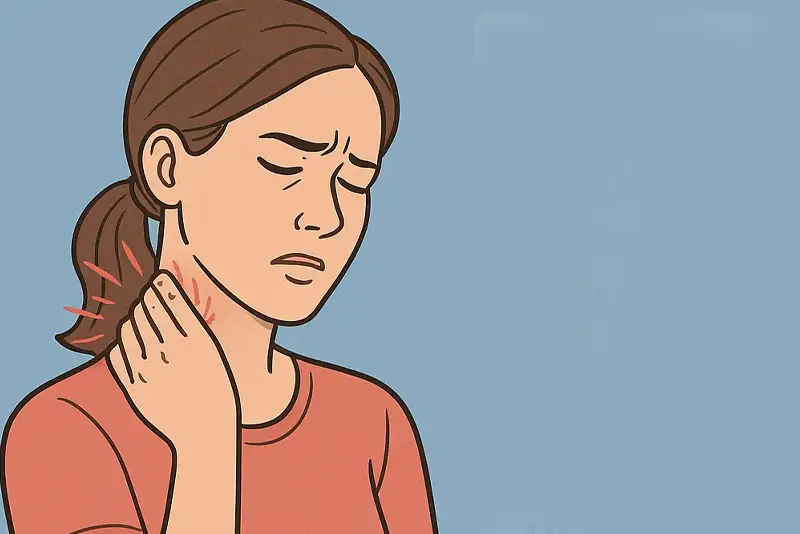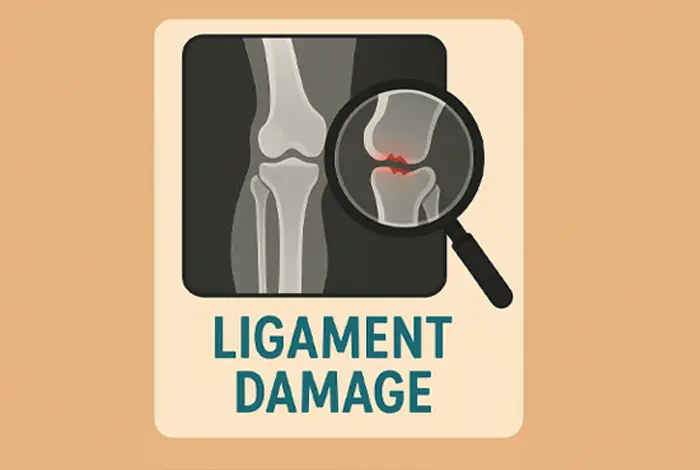Your neck is designed with a gentle forward curve (lordosis) that helps absorb shock, maintain balance, and protect the spinal cord. When that curve flattens or reverses into cervical kyphosis, biomechanics change dramatically. Muscles strain to hold the head up, discs and joints compress, andbcritically ligaments are overstressed, predisposing the neck to instability. Many patients with kyphosis have persistent symptoms despite “normal” MRIs because the true damage only appears during motion. Digital Motion X-Ray (DMX) can reveal that missing piece.
What cervical kyphosis does to the system
Kyphosis shifts the head’s center of mass forward. The neck and upper back must work overtime to keep the eyes level. Common consequences include:
- Forward head posture and rounded shoulders.
- Muscle fatigue in the neck/shoulders/upper back.
- Disc and facet joint compression, accelerating wear.
- Ligament strain, especially above and below the apex of the curve.
Over time, chronically stressed ligaments can become lax, allowing excess motion between vertebrae. This motion may not be visible on static imaging, yet it can fuel pain, headaches, and neurological symptoms.
Why instability is often missed on MRI/X-ray
Ligaments are soft tissues that are hard to evaluate unless torn significantly. Subtle laxity the kind that lets joints slip under load is a motion problem. Static X-rays can look “fine.” MRIs might show mild degenerative changes that don’t match how bad you feel. Without a dynamic study, the position-specific instability remains invisible.
How DMX identifies the true damage
DMX records X-ray video while you perform guided flexion/extension, side-bending, and rotation. For kyphosis, we often see:
- Abnormal gapping/translation at levels just above or below the kyphotic apex.
- Over-motion where the neck tries to compensate for stiffness elsewhere.
- Upper cervical coupling issues (C0–C1/C1–C2) contributing to headaches, dizziness, or visual strain.
By correlating motion patterns with your symptoms, DMX helps distinguish where the instability resides and how it’s driving your case.

Symptoms commonly linked to kyphosis + instability
- Chronic neck pain and stiffness that keeps returning.
- Headaches beginning at the skull base or behind the eyes.
- Numbness/tingling in the arms or hands (positional).
- Dizziness, balance problems, or “floating” sensations.
- Eye strain and difficulty tolerating long screen sessions.
- Trouble keeping the head upright without fatigue.
Case snapshot
“Sofia,” from Miami, had daily headaches, upper-back pain, and intermittent arm numbness. MRI showed mild degeneration not enough to explain her symptoms. DMX demonstrated a reversed curve at C3–C6, ligament laxity at C1–C2 and C5–C6, and abnormal gapping during rotation and flexion. With targeted curve-restoration chiropractic, regenerative ligament injections, and stabilization rehab, her headaches eased and she returned to desk work with sustainable posture.
After the DMX diagnosis: building a structural plan
- Regenerative medicine (PRP/cellular) to tighten lax ligaments at defined levels.
- Chiropractic curve restoration to improve cervical alignment without stressing unstable segments.
- Postural rehabilitation (breathing mechanics, rib mobility, deep neck flexor training).
- Neuro-muscular re-education for balance and head-righting reflexes.
- Lifestyle strategies: screen ergonomics, sleep positioning, and movement breaks.
Why Miami and who we serve
Many patients fly to Miami from Central/South America and the Caribbean for access to motion-based diagnostics like DMX. Our bilingual (English/Español) team provides clear reports and coordinated plans you can continue at home.
Call 305-275-7475 or book your appointment online

Dr. Rodolfo Alfonso, D.C.
Dr. Mark N. Berry, D.C.
Sunset Chiropractic and Wellness
8585 Sunset Dr. STE 102
Miami, Florida 33143
305-275-7475
Schedule Your DMX Today
You’ve been searching for answers. Now you can see the cause of your symptoms in motion.
Visit us in Miami
Call 305-275-7475
Request an appointment online
Follow us on Instagram, Facebook, and YouTube for updates, patient success stories, and expert insights on neuropathy treatment!
